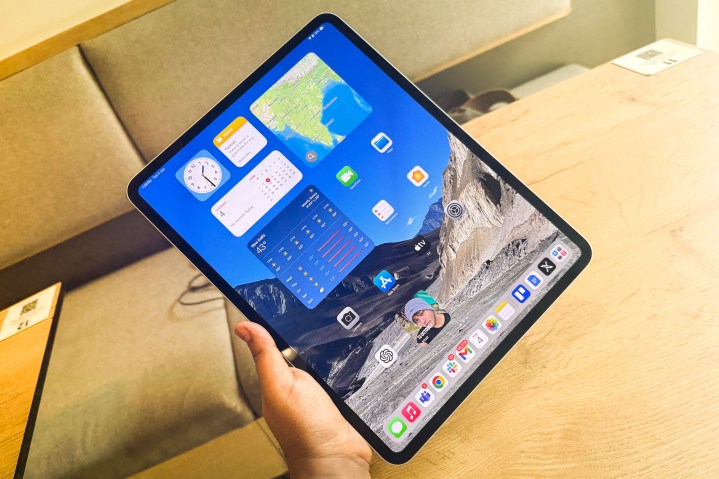With the launch of the latest iMac, Apple has just announced new Macs equipped with its latest M4 chip, bringing more powerful performance and extra features to its computers. But this won’t be the first time the M4 has made an appearance — it’s already out in the latest iPad Pro.
Is the M4 chip any good? Should you upgrade your Mac or iPad to take advantage of it? And what new features will it bring to your devices? We’ve set out to answer these questions and more, blending together what we’ve learned from the M4 iMac and iPad Pro and information that has been leaked from elsewhere. That should give you everything you need to know about Apple’s latest chip.
Price and release date

Apple has opted for something of a staggered approach for the M4 chip’s launch. Unlike most years, where Apple first releases its new chips in Mac computers, this time the company opted to put the M4 chip in the iPad Pro first, which arrived in May 2024.
As for Macs equipped with the M4 chip, those have already started rolling out in the form of the M4 iMac, with the MacBook Pro and Mac mini expected imminently. Bloomberg reporter Mark Gurman has claimed these computers will go on sale on or around November 1, which is just days away now.
That’s not the end of the M4 releases, though. The MacBook Air is due out in early 2025, with the Mac Studio and Mac Pro following later in the year. The MacBook Air will almost certainly be limited to the M4, while the Mac Studio and Mac Pro will come with more powerful variants (such as the M4 Max or M4 Ultra).
As for the price of the M4 Macs, it’s possible Apple will keep things as they are. The iMac’s starting price hasn’t increased from $1,299, despite the new M4 model featuring a Thunderbolt 4 upgrade, a better camera, new colors, and a nano-texture glass option in addition to the improved M4 chip. That means Apple could opt to keep prices the same for the M4 MacBook Pro and Mac mini, too.
That said, we wouldn’t rule out price increases for some M4 Macs as well. When Apple launched the M4 iPad Pro, it increased the price of both the larger and smaller models by $200 each. Granted, it changed other things (such as doubling the starting storage and introducing a new Tandem OLED display) that would have contributed to the price, but the fact remains that the cost to the consumer went up. That means we might end up seeing a similar price hike when the M4 chip comes to the rest of the Mac line.
Performance and features

We can gain some limited insights into the M4 chip’s performance from Apple’s iMac press release. In terms of photo editing and gaming, Apple says that the M4 chip offers 2.1 times the performance compared to the M1 chip, while its Neural Engine is three times faster than the one in the M1. The M4 iMac also comes with 16GB of memory as standard, boosting its power and performance. Apple hasn’t compared the M4 to its more recent M3, but that doesn’t mean we can’t get info from other places.
You see, assessing the performance of an Apple chip before it comes to the Mac would be guesswork in most cases, but everything’s changed this time around. That’s down to two main reasons: the iPad Pro and a series of massive leaks of the M4 MacBook Pro.
Starting with the iPad Pro, we can infer how the M4 Macs might perform based on this tablet’s abilities. The M4 chip in the iPad Pro comes with a 10-core CPU and a 10-GPU (up from the 8-core CPU in the M3 chip), which helps to give it a bit more oomph in all sorts of workloads.
In our review, we saw significant improvements over both Apple’s past iPad Pros and rival tablets. Part of that improvement will be due to the second-generation 3nm process used to manufacture the chip, which Apple says is more efficient than its previous efforts. The M4 also contains an updated 16-core Neural Engine that can perform up to 38 trillion operations per second (TOPS). Apple says it’s more powerful than any neural processing unit in any AI PC today.

But what about Mac performance? Well, aside from what we know about the M4 iMac, we have an inkling of what else we can expect thanks to a series of monumental leaks that saw the M4 MacBook Pro fall into the hands of various YouTubers well ahead of schedule, who proceeded to benchmark it and reveal its performance chops.
One of the YouTubers was a popular Russian tech reviewer named Wylsacom, who put the M4 MacBook Pro through its paces using a series of Geekbench tests. Here, the M4 chip in the MacBook Pro got a single-core score of 3864 and a multi-core result of 15288, which are roughly 27% and 31% better than those achieved by the M3 chip, respectively. That’s a sizable improvement.
As well as that, benchmarks for Apple’s Metal API have also surfaced on Geekbench, and these shed light on the upcoming MacBook Pro’s graphical capabilities. In these tests, the M4 chip scored 57603, which is about 20% ahead of the M3 chip. Again, that’s an encouraging result.

There’s one more thing revealed by the M4 MacBook Pro leaks: Apple is likely to upgrade the starting memory in these laptops from 8GB to 16GB. That’s a long-overdue change and should enable the devices to better handle multitasking and demanding workflows. It also chimes nicely with the iMac now coming with 16GB of memory as standard, suggesting that the leaks might have been correct here.
Many of these improvements — the RAM increase in particular — are likely to help Apple’s devices handle artificial intelligence (AI) duties. With the launch of Apple Intelligence, Apple has finally entered the AI mainstream, and it needs its devices to perform well in this increasingly important area.
When it comes to the most powerful chip in the M4 range (the M4 Ultra), there’s a potentially momentous change that might be on the way. As claimed by YouTube channel Max Tech, the M3 Max reportedly does not feature Apple’s UltraFusion tech. This is what has previously allowed Apple to stitch two M2 Max chips together to create the M2 Ultra.
If the M3 Max doesn’t have this feature, it suggests that the M4 Ultra could be its own standalone chip rather than two M4 Max chips fused together. That could mean better performance scaling compared to previous generations. Alternatively, the M3 Max may have lacked UltraFusion because the M3 Ultra never launched, and thus there was no need to fuse two M3 Max chips together for a non-existent higher-end chip. We might not know for sure until the M4 Max and M4 Ultra launch in 2025.
Which devices will get the M4?

We can make an educated guess as to which Macs will end up with the M4 chip, as well as which will get the higher-end variations like the M4 Pro, M4 Max and M4 Ultra.
Starting with the M4, this is likely to land in the MacBook Air (both 13-inch and 15-inch sizes), the 14-inch MacBook Pro, and the Mac mini (it’s just arrived in the iMac). Given the chip will be at the lower end of Apple’s hierarchy, it makes sense to expect it in more consumer-facing devices. That said, it’s in the new iPad Pro, which Apple touts as a very powerful device.
Moving onto the more pro-grade chips, we can expect the M4 Pro to end up in the 16-inch and 14-inch MacBook Pro and the Mac mini as an upgrade variant. The M4 Max, meanwhile, should come to the 16-inch and 14-inch MacBook Pro and the Mac Studio.
Finally, look for the flagship M4 Ultra inside the Mac Studio and Mac Pro. Those aren’t expected until some point in the second half of 2025, though, so there will probably be quite a wait until we see them in action.
